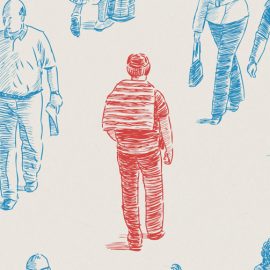What is herd immunity?
Herd immunity is when a significant portion of the population gains immunity to an infectious disease, thereby limiting its spread. It helps to protect vulnerable people like babies, the elderly and those who are immunocompromised.
How is herd immunity achieved?
Herd immunity can be achieved either by vaccination, or by developing the disease and recovering from it.
Herd immunity through vaccination
When a high percentage of the population is vaccinated, it is difficult for infectious diseases to spread, because there are not many people who can be infected. For example, if someone with measles is surrounded by people who are vaccinated against measles, the disease cannot easily be passed on to anyone, and it will quickly disappear again.
Herd immunity can protect those who cannot be vaccinated, like newborns and those who are too sick to be vaccinated.
Herd immunity by developing the disease
Enough people need to develop the infection and recover from it in order to protect the population against developing it in the future. People who develop the infection will develop antibodies* that will protect them and the community in the future.
Herd immunity threshold
Often, a percentage of the population must be capable of getting a disease for it to spread. This is called a threshold proportion. If the proportion of the population that is immune to the disease is greater than this threshold, the spread of the disease will decline. This is known as the herd immunity threshold.
* Proteins that help protect the body against foreign matter, such as bacteria and viruses.
What percentage of the community needs to be immune to achieve herd immunity?
It depends on the disease. For more infectious diseases, the percentage of the community that will need to be immune will be higher. Measles is highly infectious and around 95% of the community will need to be immune to stop the chain of infection.
For polio, the threshold is about 80%.
COVID-19
For COVID-19 the proportion of the community that needs to be vaccinated to achieve herd immunity is unknown. Herd immunity for COVID-19 through natural infection can pose many challenges. COVID-19 can cause serious complications and millions of deaths, therefore the experts recommend trying to achieve herd immunity through vaccination. Vaccines create immunity without creating illness or serious complications.
One of the challenges of achieving herd immunity for COVID-19 is that new variants of the COVID-19 virus are regularly emerging. The efficacy of the current COVID-19 vaccines against these new variants may be lower.
Does herd immunity protect against all vaccine preventable diseases?
Herd immunity does not protect against all vaccine-preventable diseases. The best example of this is tetanus, which is infectious but not contagious. It is caught from bacteria in the environment, not from other people who have the disease. No matter how many people around you are vaccinated against tetanus, it will not protect you from tetanus.
Herd immunity does protect against many serious illnesses like whooping cough, measles, mumps, rubella and pneumococcal disease. Vaccination is a safe way to achieve herd immunity and protect the community against serious illnesses, their complications, admissions to hospital and deaths.
Click here to read more about Herd Immunity
Credit: The History of Vaccines is an award-winning informational, educational website created by The College of Physicians of Philadelphia, one of the oldest medical societies in the United States. A group of prominent Philadelphia physicians, including Declaration of Independence signer Benjamin Rush, established the College in 1787 “to advance the science of medicine and to thereby lessen human misery.”
References
- Desai AN, Majumder MS. What Is Herd Immunity? JAMA. 2020;324(20):2113. doi:10.1001/jama.2020.20895
- https://www.who.int/emergencies/diseases/novel-coronavirus-2019/question-and-answers-hub/q-a-detail/herd-immunity-lockdowns-and-covid-19
- https://www.mayoclinic.org/diseases-conditions/coronavirus/in-depth/herd-immunity-and-coronavirus/art-20486808#:~:text=Experts%20estimate%20that%20in%20the,19%20to%20halt%20the%20pandemic.
- https://www.historyofvaccines.org/content/herd-immunity-0
